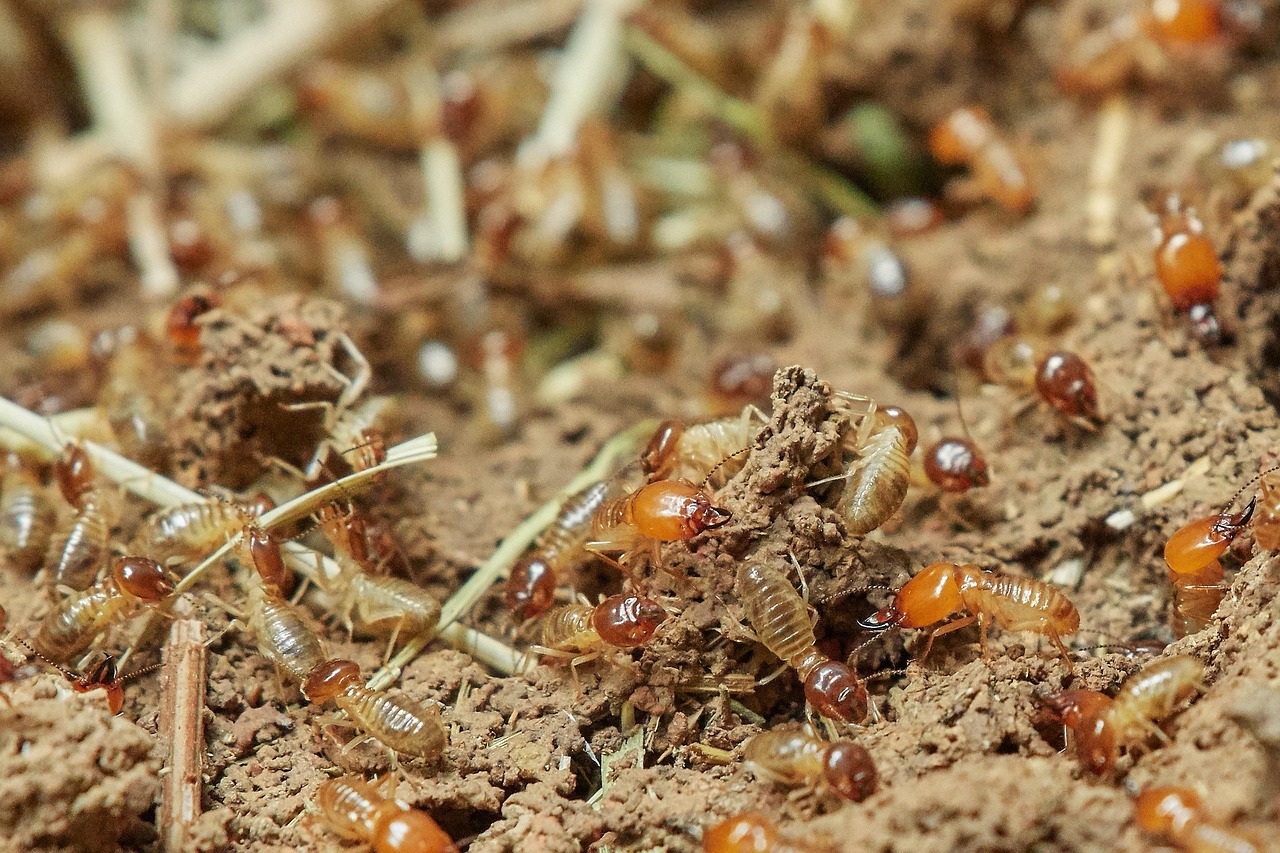How Wildfires Influence Termite Behavior and Infestation Patterns
Wildfires have become increasingly common in many parts of California, dramatically reshaping ecosystems and human settlements alike. While much attention is given to immediate fire damage and smoke exposure, one lesser-known consequence is how wildfires affect pest dynamics, particularly termite behavior. These silent destroyers thrive on wood and moisture, and wildfire events can both displace them and create new opportunities for infestation in surviving structures.
This article examines the relationship between wildfire activity and termite infestation patterns. We’ll explore how fire events alter termite habitats, increase structural vulnerabilities, and change colony movement. We’ll also outline practical tips for reducing termite risk post-fire and explain why expert assessment is critical for long-term protection.

How Fire Alters Termite Behavior and Migration
Termites are highly responsive to changes in their environment. During and after wildfires, their survival instincts push them to seek alternative shelter and food sources. As their natural habitat burns, their colonies become displaced, and they begin migrating toward cooler, undamaged areas, including homes and wooden structures that survived the flames.
Here’s how wildfires impact termite behavior:
- Loss of native food sources: Trees, fallen logs, mulch, and brush piles are often consumed by fire, forcing termites to expand their search radius.
- Shelter displacement: Subterranean termites may burrow deeper or move laterally toward buildings, especially if moisture remains in the soil.
- Heightened foraging activity: Fire-induced soil disturbances can trigger exploratory behavior among worker termites, increasing the likelihood of them encountering structures.
- Colony fragmentation: Partial loss of a termite colony may cause satellite colonies to form, further expanding their territory and risk zone.
This disruption often leads to more aggressive exploration and infestation of manmade structures as termites adjust to their altered ecosystem.
Why Post-Fire Structures Are at Higher Risk
Homes and buildings that survive wildfires may still be structurally compromised in ways that are not immediately visible. These vulnerabilities make them prime targets for termites in search of shelter and food.
Key risk factors in post-wildfire environments include:
- Cracked foundations or siding caused by intense heat
- Exposed wood framing from partial fire damage or emergency repairs
- Residual moisture in wall voids or crawl spaces from fire suppression efforts
- Ash and organic debris accumulation that attracts subterranean termites
Even areas with minimal damage can create the ideal conditions for termite colonization if preventative steps are not taken promptly. These issues are similar to the increased pest activity observed during other extreme conditions, as explained in this overview of the weather’s effect on pests.
Warning Signs of Fire-Driven Termite Infestation
Spotting the early signs of a termite problem after a wildfire is crucial to preventing widespread damage. Many homeowners focus on visible fire damage but overlook indicators of pest migration that follow in its wake.
Watch for the following red flags:
- Mud tubes along foundation walls or beneath siding
- Hollow-sounding wood when tapped, especially in baseboards or door frames
- Discarded termite wings near windows or doors, often left after swarming events
- Frass or sawdust-like debris appearing around wooden structures
- Blistered paint or bubbling surfaces that may suggest hidden damage
In fire-impacted areas, even small signs should be taken seriously. Termites are opportunists, and compromised wood becomes an easy target for colonies looking to re-establish themselves.
How Wildfires and Drought Work Together
Wildfire-prone regions often overlap with drought-affected areas, creating a dual environmental stress that influences termite movement. Drought weakens vegetation, making it more susceptible to fire, while also drying out termite habitat and forcing them closer to man-made structures where moisture levels are more stable.
This combination intensifies termite risk for homes in affected regions:
- Drought-exposed roots and tree trunks are easily ignited, eliminating termite habitat
- Loss of ground cover pushes termites to seek shaded and hydrated shelter zones, such as under buildings
- Dry conditions accelerate the desiccation of natural termite food sources, pushing colonies into survival mode
If you live in an area prone to both drought and wildfire, it’s critical to understand how environmental stressors can shape long-term termite behavior. For more details on this complex interaction, see this guide to termite risks in drought.
Long-Term Prevention and Professional Assessment
After a wildfire, termite control should be part of any property’s recovery and resilience plan. The following steps can help reduce the likelihood of infestation and safeguard your investment:
- Schedule a post-fire inspection to evaluate structural vulnerabilities and termite presence
- Repair or seal exposed wood immediately, especially in crawl spaces, decks, and siding
- Install barriers such as mesh screens or sand layers around foundations to deter subterranean termites
- Maintain proper drainage to avoid standing water near the foundation or under the home
- Remove wood debris and avoid storing firewood near exterior walls
While these strategies are essential, they are most effective when guided by experienced professionals. Many signs of termite behavior are subtle and easily missed without a trained eye. Moreover, choosing the right pest control provider is crucial, especially in post-disaster contexts. If you’re not sure where to begin, this resource on choosing pest services offers practical guidance.
Don’t Let Fire Invite Silent Damage
The aftermath of a wildfire doesn’t end when the smoke clears. If your home or neighborhood has recently experienced a fire, now is the time to act. Termites may already be moving in quietly and persistently. Contact Elite1 Termite Control, Inc. to schedule an expert inspection and implement long-term protection strategies tailored to your property’s post-fire conditions.

